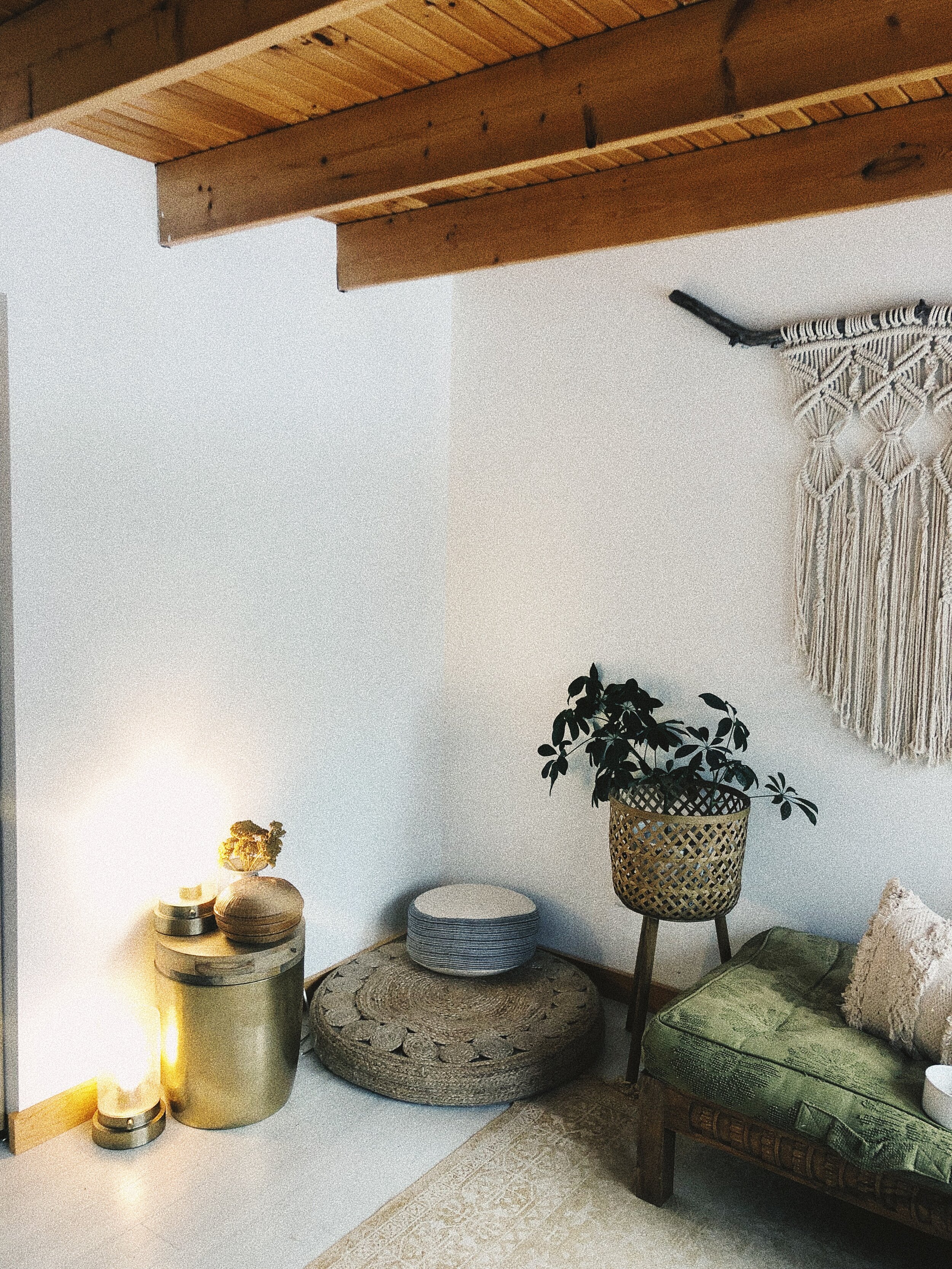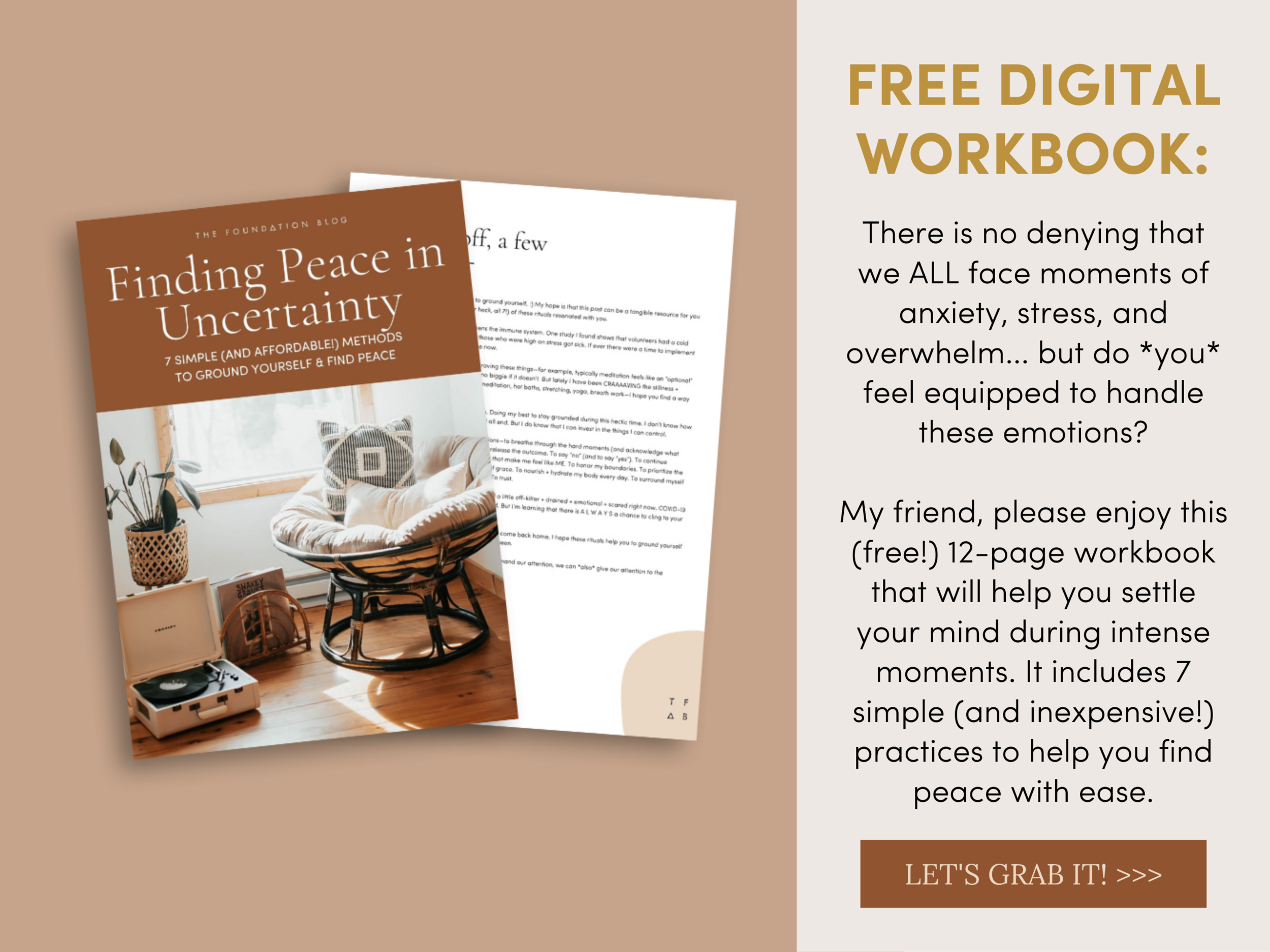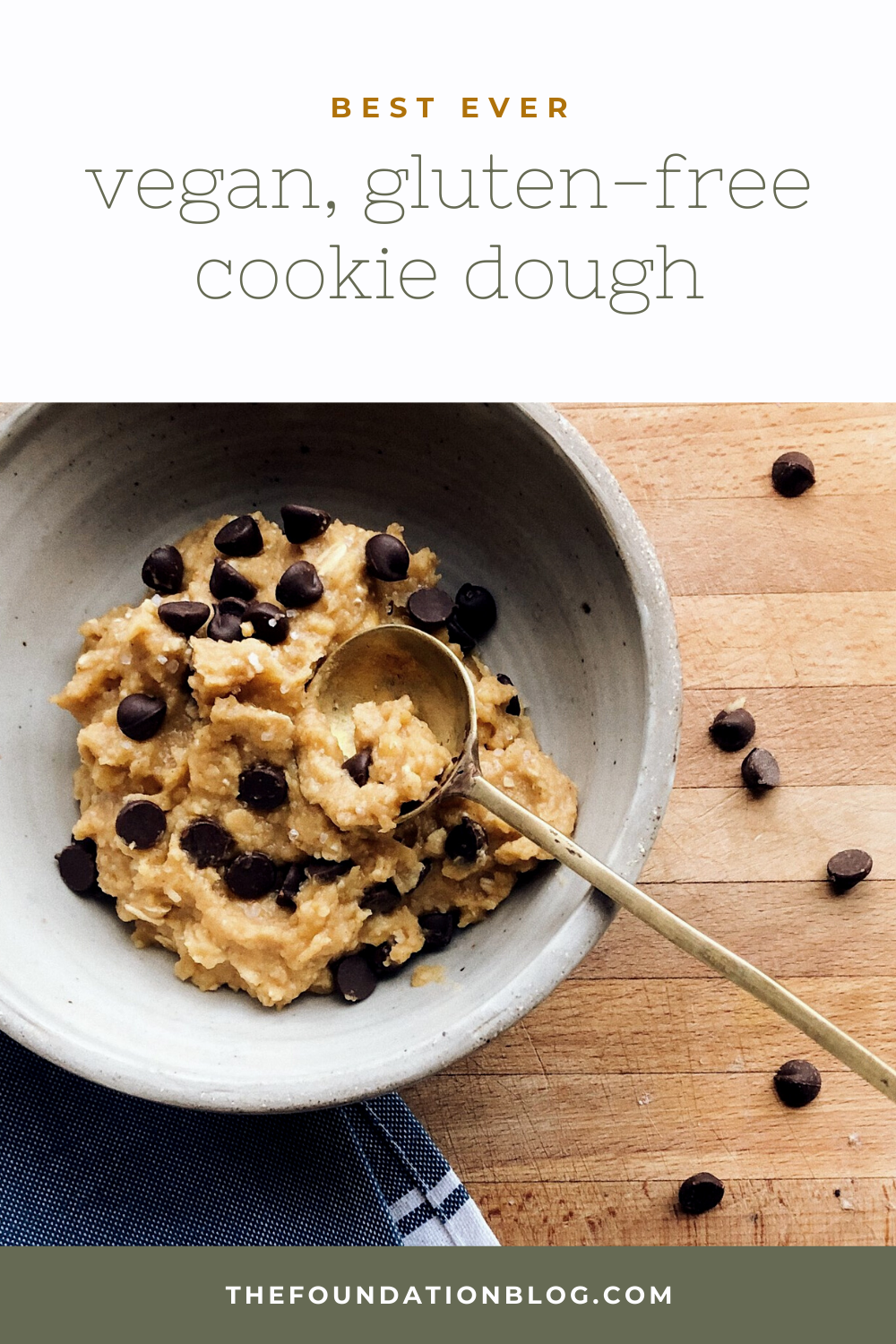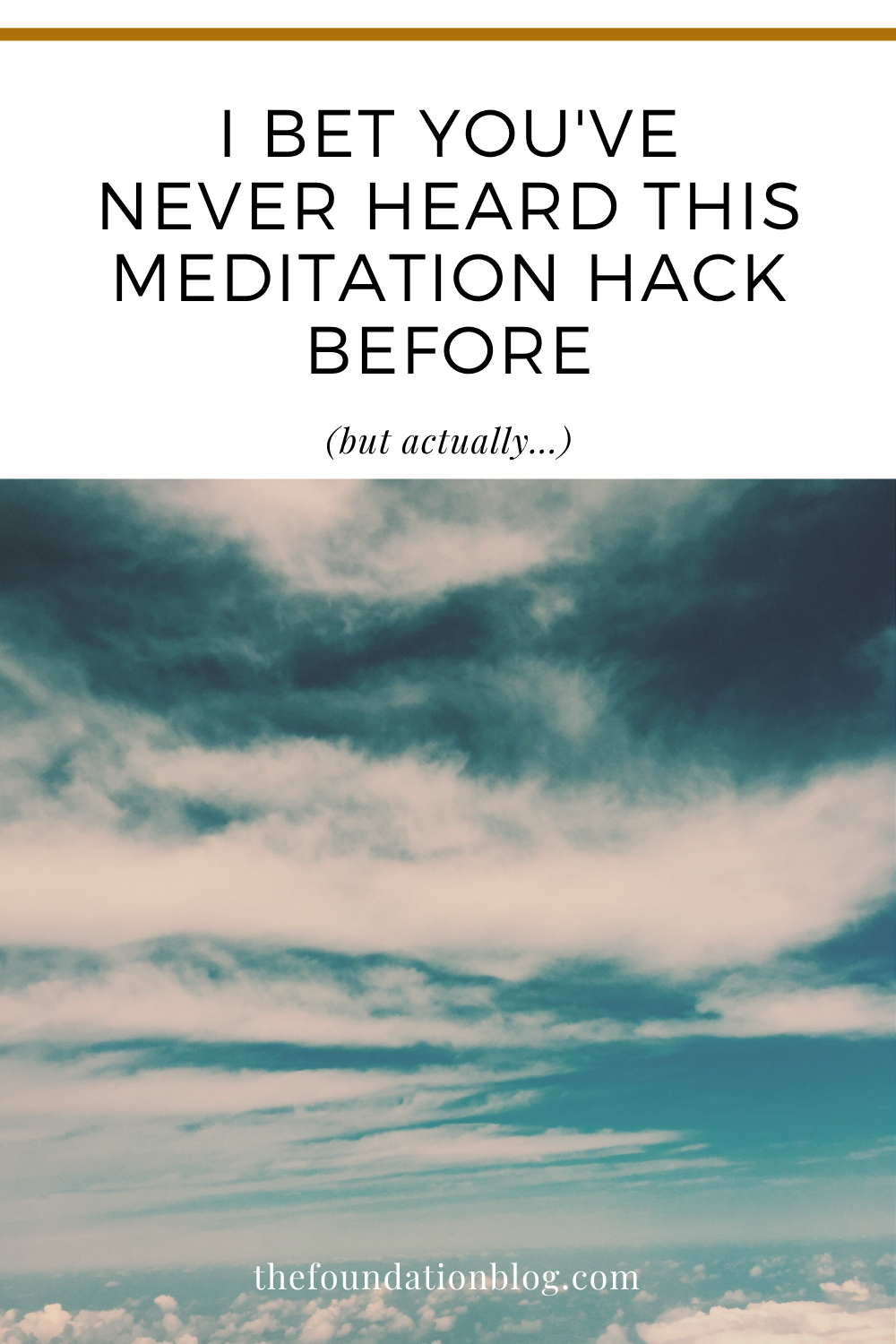How To Meditate: 11 Simple Tips for Beginners
Mmmmm, hello, my friend. As I write this, it is the start of a new year and one of my main goals is to meditate daily. And truthfully, this will be a challenge for me. Meditation has historically been something in my life that is very easy to “put on the back burner” and neglect.
Sooooooo, WHY and HOW am I so committed to doing it daily this year?
Welp, my friend, because on the days I do meditate, I notice suuuuch a tangible shift. In my mood. My energy. My mindset. Not only during the meditation, but throughout the rest of my day. So this is the year that I decided to prioritize taking an intentional time to pause, breathe, and reset my energy every single day—even if it’s just for a few minutes. Even if it doesn’t look “perfect.” Even if my mind wanders.
Because this practice has changed the game for me—meditation helps me to feel calmer, more in control, more organized and helps me to respond more gracefully to the relationships, stressors, and responsibilities in my life—both on my meditation cushion and off. In this post, I am going to walk you through the basics of meditation, the data supporting it, how to create a true habit, and 11 tangible tips to get you started!
meditation: the basics
Meditation is an act of being still, both physically and mentally. It is bringing an intentional awareness and pausing in the present moment, reacting non-judgmentally to thoughts, emotions, or situations. A major facet of meditation is paying attention to the breath, using our focus on the breath as our “anchor.” When we pay attention to our breath, we train our brains to truly be in the present moment—to be with ourselves in the here and now—on purpose, with intention, and without judgment.
Simply put, meditation is an act of pausing and truly being present. It helps us to pause. To notice. To be with our thoughts. To strengthen new (more positive, more intentional) neural pathways. To reframe our mindset. And to move forward in the rest of our day with presence, intention, and clarity.
meditation: the data
I’m sure you’ve heard by now that meditation is good for you, but exactly how so? Truthfully...describing meditation as simply “good” for us completely understates how impactful this simple, cost-effective practice can be. Mindful meditation has been found to harness areas of the brain that control cognition, regulate emotions, and decrease negative thought processes…which, in turn, can have an incredible impact on our physiology, emotions, and behaviors. I could go on a complete ramble here, but instead I’ll give you a few bullet points on the power of meditation emotionally and physically (all sources can be found at the bottom of the post):
In a randomized controlled trial, one group went through a standard weight loss program and another went through an identical weight loss program with the addition of being trained in mindful meditation. The meditation group lost more weight, improved eating behaviors, and improved dietary restraint significantly more than the control group.
College-aged students who used a mindfulness phone app showed improvements in depressive symptoms, college adjustment, resilience, and mindfulness in a 10-day span of using the app.
In a study of 74 military personnel affected by PTSD or another anxiety disorder, half of the group took part in a 20-minute transcendental meditation (TM) session and the other half (a control group) did not. The authors found that at one month, most patients (84%) in the TM group had stabilized, decreased, or ceased medications, compared with 59% of patients in the control group. Only 11% of patients in the TM group increased their medication dosage, compared with nearly 41% of patients in the control group.
To all my fellow healthcare peeps—you’ll love this systematic review. It measured various biomarkers (C-reactive protein, various interleukins, immune cells, telomerase, etc.), and the big picture: mindfulness has been correlated with reductions in pro-inflammatory processes (less inflammation, hollllla!), increases in cell-mediated defense parameters (stronger immune system = less illness), and increases in enzyme activity that guards against cell aging (this is in regards to telomeres which are correlated with youth/strong cell processes!).
A comprehensive literature review identified that mindfulness meditation has a positive impact on nurses' (and nursing students') stress, anxiety, depression, burnout, sense of wellbeing and empathy. (Looking @ you, all of my fellow nurses and healthcare peeps!)
According to Herron (2011), a 14-year study comparing over 2,800 people found that those who meditated had their healthcare costs drop by 11% after one year of meditating, and after five years, their payments had dropped by 28% annually. This is compared to the non-meditating group (who was matched for age, gender, and region) whose health costs did not significantly change.
— I mean, WHOA. Meditation is free, approachable, and impactful. It’s an intentional pause that gets us out of “autopilot” or a “subconscious” mode of operating in our day to day life.
but to get these results, you have to start…
All of the above impacts don’t happen overnight. Because the reality? We live a majority of our lives from our subconscious brain, living on autopilot…making it easy for us to fall into the same old patterns, habits, and thoughts again and again. On the other hand, mindfulness is the exact opposite of that. A mindfulness practice allows you to break out of that autopilot mode and to be intentional with your thoughts and reactions, strengthening new neural pathways that lead to more intentional actions, thoughts, and behaviors.
But…new neural pathways don’t grow overnight. It takes practice, repetition, and consistency to form a new habit and to truly feel the positive impacts of meditation. The more we meditate, the stronger these neural pathways become (neuroplasticity)—activating our brain’s grey matter and allowing us to live less on autopilot brain and more with intentional behaviors. So why does this matter? Because these positive impacts trickle farrrrr beyond the meditation session—you’ll notice a calmer, more organized, more focused mindset for the rest of the day. You may see positive shifts in your willpower, reactions to others, patience, mental health… Ahhhh, it’s truly such a powerful practice.
The best part? Making meditation into a consistent practice doesn’t have to be complicated or feel overwhelming! Today, I am going to break it down into 11 simple rules that will be useful for you as you navigate. Ya ready to begin a mindfulness journey of your own?
How to Meditate: 11 Tips for Beginners
1) the first (and most important) rule
My friend, I mean this with kindness—don’t get caught up in the how or doing it “right.” Just do it. If you truly want to start meditating, please release all pressure on yourself to do it perfectly. I see a lot of people ask detailed questions, concerned about what specific meditation pillows to get, what specific time of day they should do it, how exactly to sit…and this is all nice, but it’s not necessary to start meditating! You can start anywhere at any time! (Well…except meditating while driving probably isn’t the best idea, ha!). Simply start. We can fine-tune the details and optimize your meditation practice later on, but right now? Drop the need to meditate perfectly and instead focus on just doing it!
2) pick a time & set a timer
Pick how long you’d like to meditate. There is NO rule here! When I first started, I sometimes struggled to make it even 2 minutes! And that’s okay! Remember that 90 seconds is better than 0 seconds, (*wink*). Simply set a timer for the amount of time you intend to meditate (2 min, 3 min…) and work upwards as you get more comfortable—stretch to 5 minutes, 10 minutes, 15 minutes, and beyond!
3) pick the soundtrack to your meditation
Again, there are no rules here! Some people like meditating in silence, some prefer white noise, other choose a guided meditation or some calming music—pick what you would like to play in the background. When you’re getting started, some guided meditations can be nice. This means a voice is giving you prompts and leading you through the meditation (for example, this 5-minute morning meditation). This can be nice for structure, focus, and comfort with what meditation is. I recommend searching for a topic that is relevant to you at that moment (for example, “guided meditation for focus,” “guided meditation for stress relief,” “guided meditation to help with anxiety,” etc.). You can find these anywhere—you can use Spotify, YouTube, the Peloton App, apps on your phone, etc.
Here are 3 sources of guided meditations to get you started:
4) get comfortable
Once you have found the sound situation you want, start your timer and find a place to sit that feels calm and quiet to you. You don’t need a formal meditation space—you can sit in a chair with your feet on the floor, you can sit cross-legged, you can lay…whatever is right for you! Just make sure you are comfortable and in a position you can remain in for a while. There is no “perfect” place to meditate! If you’re comfortable, you’re good!
(If you do want to optimize your space, I personally invested in two meditation pillows once I got more into my mindfulness practices and wanted a set, sacred space in my house to help me be consistent! I got two meditation pillows that help me sit upright, stay comfortable, and remain focused for my mindfulness practice. I got my small cushion on Etsy and my big floor pillow here.)
Probably the most asked question in my DMs is “WHERE are your meditation pillows from?!?!” Soooo, my friend, here they are! I got my small cushion on Etsy and my big floor pillow here
5) “what should I do with my eyes? open? closed?”
Again, no rules. I personally close my eyes (I feel that it helps me focus), but I know other people like their eyes slightly open (not necessarily wide open, but more of a soft, slightly downward gaze—not focusing on anything in particular.) Try both, and see what feels more comfortable to you!
6) tune in to your breath
Now hereeeee is where the meditation truly begins! Start to notice your breath, inhaling deep (expanding your belly) and then fuuuuuuullllly exhaling, slowly and intentionally contracting your diaphragm. Don’t necessarily worry about speed, depth, or how to breathe (welp, I mean… you should definitely worry if you’ve stopped breathing, hahaha). But in general, breathe in a way that feels nice to YOU. Sometimes that may be deep, loud, fully expansive breaths, and other days it may look like your normal breath rate and pace! Breathe in whatever way feels comfortable to you in that moment at that time. Then, notice your breath, using this as the anchor of your focus, following the sensation of your breathing as you inhale and exhale. In and out, in and out, in and out..
7) come back to the present moment
So let’s just get this out of the way…in mindfulness meditation, you’re learning how to pay attention to the breath, but you will get distracted. It’s not an “if”...it’s a WHEN. I often hear people say, “I can never empty my mind!” My friend, meditation is not about emptying your mind—I promise you, everyone’s mind wanders when meditating. It’s not necessarily bad! Just notice when your mind wanders or gets distracted, and then gently refocus on the breath. This is where you’ll start to strengthen new neural pathways for focus, calmness, and mindfulness.
8) don’t beat yourself up for feeling “distracted”
Don’t judge yourself for having a wandering mind—just do your best to come back to the breath.That’s it. :) If you feel that you are having excessive trouble focusing on your breath, I recommend counting your breaths! Just place the attention on your breath as it comes in, taking note of sensations, following it through your nose alllll the way to your lungs as a full inhale and exhale. That’s 1. Then repeat. That’s 2. Repeat this to the count of 15, then repeat again, starting at 1!
It can also be valuable to reflect on where your mind is going when it wanders. Is it one thing in particular? Do you notice a certain thought pattern that you keep falling into? What do the inner narratives of your mind tell you? This can offer clues and keys into your “real life” on areas that may need action, attention, gentleness, forgiveness… Again, don’t worry about being perfect—just be intentional. It’s okay for your mind to wander. Just come back!
9) close with kindness & linger in the moment
When your meditation time is up, let yourself gently emerge from the meditation. Slowly open your eyes and take a moment to reflect on how you feel, notice any emotions that came up, etc. I personally like to tangibly smile before I open my eyes. It helps me to solidify a positive feeling before I re-enter the “real world.” That may be cheesy, but I find it really lovely!
Then, if you have a few extra minutes, lingerrrrrr in the moment! I will often take the beautiful space right after meditation for whatever my body/mind is needing—maybe it’s a few more minutes in silence, maybe a gentle 5-minute yoga flow, some journaling, or some stretching and self-massage. But whatever it is, I try to be in tune with my needs at the moment and reeeeallly soak in this self-care ritual and linger a bit in that magical post-medi feeling (IYKYK).
10) set reminders & make it a habit
While each single meditation can have a positive impact, it really is through repetition and consistent progress that you will see true shifts in your mindset, mental health, and willpower.
My 10th tip is about making it work for your schedule and making it a habit. For timing, ask yourself what’s the best time of day that you can consistently show up? Is it in the morning before your family wakes up? After your workout? At lunch? Before bed? Consider your schedule and responsibilities and dream up a general idea at what time of day will work best for you. (But be careful not to give yourself too much grace here! If you always wait for the “perfect” time, you may never start!)
Next, put meditation reminders around you! Don’t make this a one-time thing, make it into a habit. Put a sticky note on your mirror, create a reminder in your phone, set up a habit tracking system, add it to your to-do list…however you do it, make it work for YOUR schedule and create reminders to keep yourself accountable.
^^^These habit tracking sheets are how I personally stay consistent to my meditation practice. All you have to do is shade in the triangles on the day you do meditate, and you can see your progress unfold! This is a great (and super simple) method to staying accountable.
11) remember it is a mindfulness practice
I hear that some worry they “aren’t doing it right” or “can’t shut their brain off.” And this is OK! Meditation is a practice after all. Give yourself grace as you begin, and let go of expectation. It is not about doing it perfectly—it is about showing up. Even if your day is busy, even if you feel like you don’t have time, even if you only have 90 seconds, keep showing up. Keep meditating. Give yourself grace (but hold yourself accountable). And make this into your practice.
alright, my friend…
That’s a wrap! 11 tips for beginners to embark on a meditation journey for themselves. This post gave you some general tips for how you can start (and maintain) your mindfulness practice. If anything, I hope this post showed you that meditation is not always about sitting in a zen, cross-legged position and repeating “oooommm” for hours on end. It is about bringing mindfulness, presence, and intention to whatever moment you are in. Focus on your breath—in + out, in + out, in + out—give yourself grace, and you’ll begin to feel major shifts in how you show up and feel…in your meditations and beyond.
was this post helpful to you?
I’d love if you passed it along the link (https://thefoundationblog.com/blog/meditation101) to a friend! Find yourself a meditation accountability partner and you can start this new habit together!
ready for more?
REFERENCES OF THE DATA MENTIONED:
Ainsworth B, Marshall JE, Meron D, et al Evaluating psychological interventions in a novel experimental human model of anxiety. J Psychiatr Res. 2015;63:117–122.
Black, D. S., & Slavich, G. M. (2016). Mindfulness meditation and the immune system: a systematic review of randomized controlled trials. Annals of the New York Academy of Sciences, 1373(1), 13.
Cettina, L. A. (2018). Meditation, not medication, to relieve anxiety. Nursing2018, 48(9), 44-47.
Flett, J. A., Hayne, H., Riordan, B. C., Thompson, L. M., & Conner, T. S. (2019). Mobile mindfulness meditation: a randomised controlled trial of the effect of two popular apps on mental health. Mindfulness, 10(5), 863-876.
Hoge, E. A., Bui, E., Palitz, S. A., Schwarz, N. R., Owens, M. E., Johnston, J. M., ... & Simon, N. M. (2018). The effect of mindfulness meditation training on biological acute stress responses in generalized anxiety disorder. Psychiatry research, 262, 328-332.
Spadaro, K. C., Davis, K. K., Sereika, S. M., Gibbs, B. B., Jakicic, J. M., & Cohen, S. M. (2017). Effect of mindfulness meditation on short-term weight loss and eating behaviors in overweight and obese adults: a randomized controlled trial. Journal of Complementary and Integrative Medicine, 15(2).
van der Riet, P., Levett-Jones, T., & Aquino-Russell, C. (2018). The effectiveness of mindfulness meditation for nurses and nursing students: An integrated literature review. Nurse education today, 65, 201-211.
Zeidan F, Martucci KT, Kraft RA, McHaffie JG, Coghill RC. Neural correlates of mindfulness meditation-related anxiety relief. Soc Cogn Affect Neurosci. 2014;9(6):751–759.










